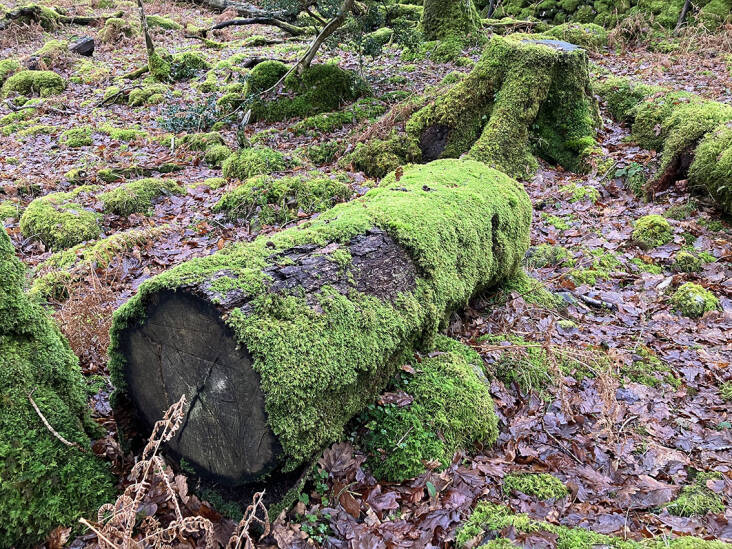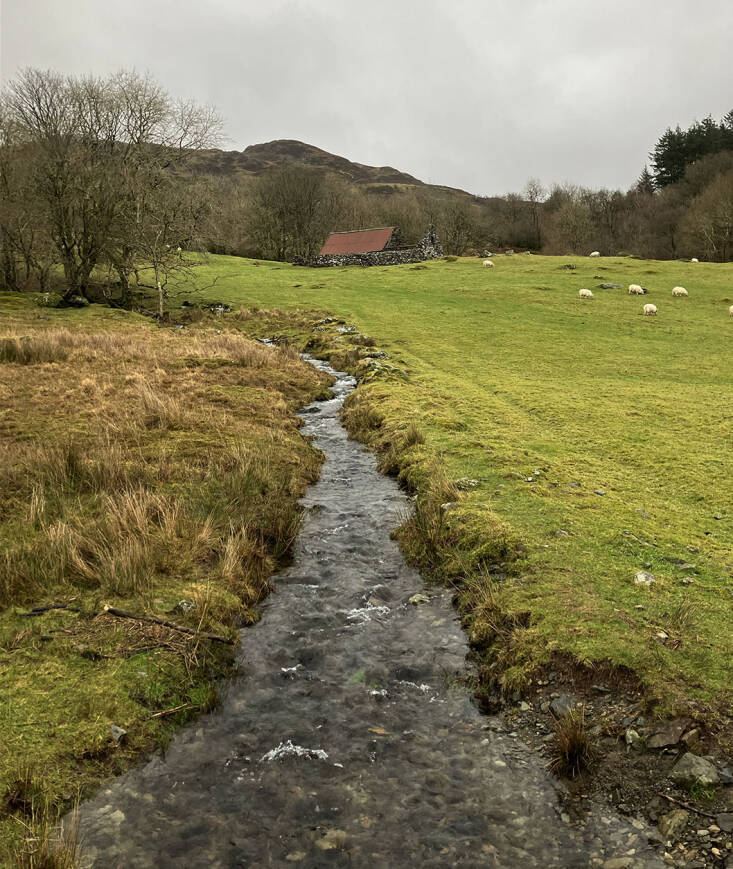Demonized by lawn fanciers, prized by florists, and tweezered by show garden specialists, the lowly moss carries a lot of baggage—when it is noticed at all. In the damp and shaded places where it thrives, luxuriant moss is a lesson in natural gardening. But what does it do? After a weekend gaping at moss in the mountains of Snowdonia, northern Wales, I found my copy of Gathering Moss by Robin Wall Kimmerer, and decided to give it the attention it deserves.
Photography by Jim Powell for Gardenista.

Robin Wall Kimmerer (author of the influential Braiding the Sweetgrass) is a Citizen of the Potawatami Nation. Her instinctive and cultural curiosity about plants mixes with her work as a scientist; moss is a strong, if not obsessional, interest.

One of the more shocking chapters of the book describes the desolation left by moss harvesters who sell their foragings to the horticultural industry. Prized mosses develop in tandem with a tree; they can only get a foothold on the knobbly twigs and leaf scars of young growth, with moss attracting more moss. When stripped, a smooth tree is of little use to mosses, and is a loss to birds and insects. There is logic therefore in harvesting moss from a lawn.

In a deciduous forest like this one in Snowdonia (inhabited mainly by pygmy oaks), mosses could not survive under the avalanche of leaves in autumn, so they make their home on higher planes. Their primitive structure gives them a better success rate than more evolved plants with roots and waxy leaves: all the minerals they need come from rainfall, and when the atmosphere dries up, they become desiccated, but do not die.

Although Wall Kimmerer is unsparing with the geeky facts, her indigenous understanding is what really gets the pages turning. In what she calls the “web of reciprocity,” plants have a role for humans which they make as plain as day, when we are prepared to look, and they are honored for the help that they give. This has nothing to do with the (erroneous) medieval idea of lung-shaped lungwort benefitting lungs; plants put themselves in places where their role should become clear. Dock leaves next to stinging nettles, jewelweed near poison ivy.

In her quest to discover the point behind moss and its relationship with people, Wall Kimmerer searched long and hard through historical tracts written by male anthropologists. She eventually came upon one diffident sentence that stated that moss was “widely used” by indigenous women, for the equivalent of diapers and sanitary towels. Dry moss growing by a stream is a gift, after bathing. Sphagnum moss can absorb 20 to 40 times its weight in liquid.

The chapter titled “City Mosses” is also gripping. Moss is better equipped to survive drought than grass, so an ailing lawn will look even worse with green patches of moss, as the rest of it turns yellow. Why stick to something that isn’t working? Bryum argenteum is the very successful moss that grows on roofs, or the edges of car windscreens, or in cracks in the pavement. It is not a parasite and it can be useful (log cabins benefit from moss insulation). As with lawns, it’s the perception, or the look that people worry about.

See also:
- Gardening 101: Marimo Moss Balls
- Ask the Expert: 7 Tips for Making a Moss Checkerboard
- 10 Easy Pieces: The Most Magical Mosses










Have a Question or Comment About This Post?
Join the conversation